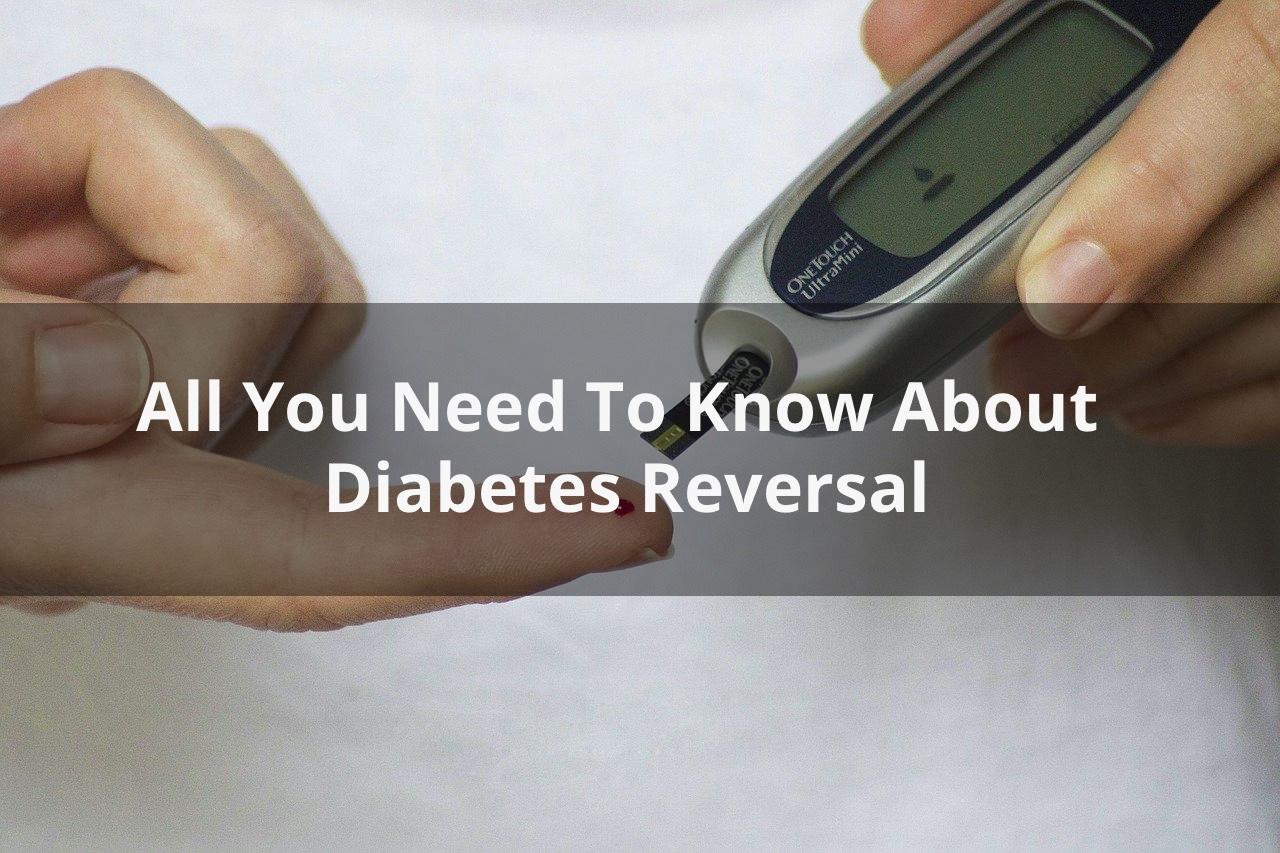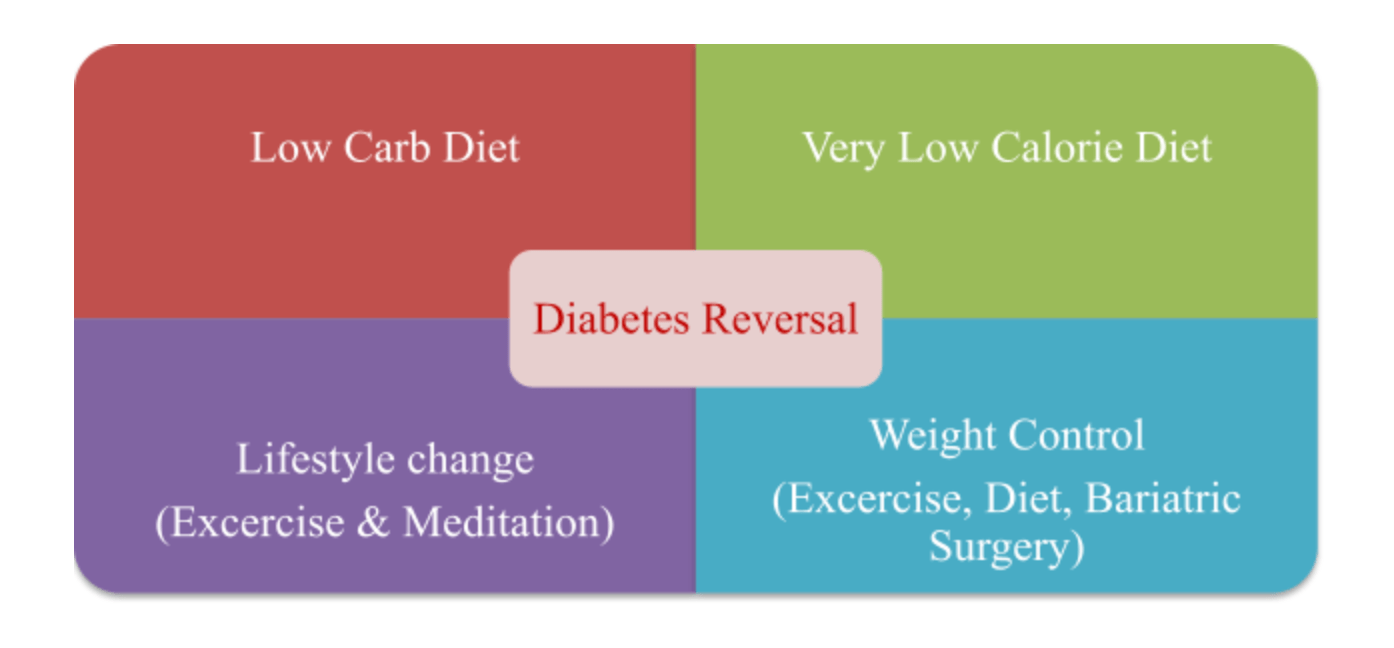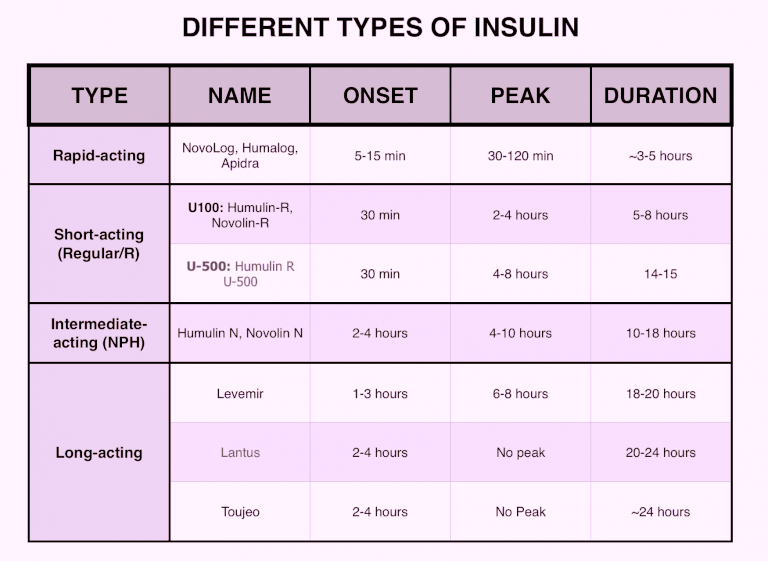Last updated on September 8th, 2022
Type 2 diabetes cannot be cured completely. This statement dispirits each and every person who has diabetes. But do you know that it is possible to reverse diabetes? Diabetes reversal has become a popular term. It gives hope of a free and stress-free life from Type-2 diabetes. What is it and how can it be achieved. Read the below article to know more about Diabetes Reversal Process.


What is Diabetes Reversal?
Type 2 diabetes is a chronic disease that is considered not curable. But it is found through clinical studies that the condition in some patients can be reversed. Yes, Diabetes can be reversed. The glucose levels can go to normal and insulin sensitivity can be improved. This is known as diabetes reversal.
Reversal of diabetes is a condition when the patient is not taking diabetes medicine and simultaneously there is a significant improvement for a longer time in insulin sensitivity and the HbA1c levels are below 42mmol/mol i.e. 6% [2].
This condition is possible through the collective effect of exercise, lifestyle change, diet plan, and medicinal support.
Summary:
Enhancing insulin sensitivity, maintaining HbA1c levels below 6% without diabetes medicines a signs of -Diabetes reversal.

Diabetes Reversal Factors:
To achieve diabetes reversal it is necessary to examine the factors that impact the reversal process. Numerous researches outline obesity as the leading factor for type-2 diabetes. Along with it a poor lifestyle with less physical exercise and an improper diet can cause type-2 diabetes. Let’s examine each factor in detail.
Weight gain and diabetes:
Obesity and weight gain are due to increased intake of a diet rich in high calories. Insulin levels in the bloodstream increase as you intake high-calorie carbs. High insulin levels in the blood make the body cells resistant to insulin. Thus, the blood glucose accumulates and leads to weight gain.
The high blood glucose triggers the pancreas to produce more insulin. This weakens the beta cells of the pancreas and thus the production of insulin decreases. Moreover, high blood glucose level makes body dull and leads to the feeling of hunger. Hunger results in overeating and with no or less physical activity, it results in weight gain.
Overeating, less physical activities, and high levels of insulin result in excessive weight gain. It also results in insulin resistance and later leads to decreased insulin production. One may notice increased thirst, increased desire of urination, and increased desire to eat, all indicating diabetes.
Also Read: Normal Blood Sugar Levels Chart
Summary:
Overeating, less physical activities, and high levels of insulin result in excessive weight gain.
Exercise-related reasons:
With less to no physical activity, the blood sugar levels intake by the cells decreases. This results in the accumulation of glucose. It leads to weight gain. Regular exercises enhance blood glucose absorption by cells and strengths muscles.
Lack of muscle strength – Strength exercise makes your muscles work harder than usual which increases your muscle strength and endurance. This helps in the absorption of blood glucose into the cells. A small decrease in muscle strength might give rise to insulin resistance.
Lymphatic abnormality – Stagnated lymph causes both insulin resistance and obesity. Exercise and an active lifestyle help lymph fluid move through the lymphatic system and minimize lymphoedema swelling.
Summary:
Lack of physical activity decreases blood glucose absorption by muscles and leads to glucose accumulation. Later it leads to weight gain and insulin insensitivity.
Stress-related reasons

Stress hormones – Stress acts as a major obstacle in glucose control. When you are under stress, your body triggers the stress hormones. It causes the release of cortisol and adrenaline into the bloodstream.
Cortisol negatively impacts insulin secretion. This hormone acts as a barrier in insulin secretion. It also increases the output of hepatic glucose [2].
With the release of cortisol the blood flow to the muscles and limbs increases. It prepares you to fight the situation. This increases the body’s demand for energy and leads to a rise in blood glucose levels. Finally, prolonged stress and depression thus cause insulin intolerance and glucose intolerance.
Summary:
Cortisol a hormone released during stress negatively impacts insulin and leads to glucose and insulin intolerances. Prolonged stress and depression thus lead to diabetes.
Key for Diabetes Reversal
If you are aiming to achieve freedom from diabetes, you should aim for diabetes reversal. For diabetes reversal, you need to break the cycle of insulin and glucose insensitivity. The best ways to achieve this reversal is as follows:
- Diet control: maintain a low-carbohydrate diet and very low-calorie diet.
- Lifestyle change: lifestyle change and regular exercises are essential for weight maintenance.
- Bariatric surgery: this can help in controlling weight problems and enhance beta-cell performance.

Diet control
The best diet for diabetes reversal is to maintain low- carbohydrate diet and a very low-calorie diet.
Low-carbohydrate Diet:
A low carbohydrate diet has proven to be very effective in diabetes reversal. Numerous studies depict that a low-carb diet helps in glycemic control. It also helps in the reduction of the intake of diabetic medicine.
Clinical research reveals that a low carb diet of less than 20 g along with low glycemic food had a greater impact on reducing the values of HbA1c, insulin levels, and weight in patients [2].
Within 24 weeks 95% of the patients reported reducing diabetic medicines and had good glycaemic control with a low carb diet [3].
Recommendation:
- It is advised to restrict carbs count. It should be 14% of the total energy intake of the food [2].
- The low carb count should be 130 g per day while the very low carb count should be 20 to 30 g per day [2].
- Protein should be 20% of the intake [2].
Also Read: Low Carb High Fat Diet for Diabetics
Summary:
Low carb count of less than 130 g per day can have a reduction in glucose levels, weight, and the intake of medicines.
Low-Calorie Diet:
Clinical studies show that consuming a very low-calorie diet can play an important role in diabetes reversal. A low-calorie diet reverses diabetes up to two years duration [3].
The low-calorie diet of 1200 to 1500 for rest days and 500 to 600 calories of diet for 2 days in a week, had a significant impact on weight loss and blood glucose levels [2].
A low-calorie diet is effective in short-term diabetes reversal. Studies report an effective reversal of 2 years. The low-calorie diet helps in weight reduction [3]. But one must avoid excessive low-calorie diet restriction as it can harm health.
Summary:
Low-calorie diet can help in short-term diabetes reversal.
Diet Formula:
Based on the above low carb and low-calorie concept the diet plan suitable for diabetes reversal is as follows:
Phase 1- Basic Diet (4-8 weeks)
Avoid consumption of dairy products and include a 25% principle in meals (equal quantity of grains, vegetables, salad, and pulses in your meal). Due to which this phase will help in reducing blood sugar, weight, inflammation, and will increase micronutrients.
Phase 2- Intensive Diet (8-12 weeks)
Do intermittent fasting or take a low-calorie diet. Include fresh vegetable juice in your diet plan. These help in detoxification, repair, rehydration, and ketosis.
Phase 3- Muscle Building Diet (3-6 months)
Decrease carbs and protein should be 20% of the intake to help in muscle building [3]. Enough proteins, vegetables, oils, fruit should be taken.
Phase 4- Maintenance Diet (after 6 months)
Have a simple macro diet plan or flexible dieting meal plan. This dietary plan can be achieved throughout your life.
A change in your diet is very necessary for the reversal of diabetes. Lower your sugar intake and include brown rice, quinoa, vegetables, and healthy fats (fish, avocado) in your diet.
To control diabetes, use natural remedies like cinnamon, fish oil, fenugreek seeds, and CBD oil.
Also Read: Is avocado good for diabetics?
Bariatric Surgery
The biggest challenge in type 2 diabetes reversal is weight control. Bariatric surgery has shown promising results in diabetes reversal due to the best weight control advantage it offers.
In a clinical study, it is found 72 % of the patients with type 2 diabetes were able to achieve diabetes reversal after 3 years after Bariatric surgery [1]. While 24% were able to achieve reversal after 6 months of the surgery [1].
Bariatric surgery is suitable for a long-term reversal of diabetes. In this surgery, the stomach of the patient is made smaller. Due to a smaller stomach, one can only eat small meals. Nutritional supplements shall be necessary to meet energy demands. It results in weight control, increases insulin sensitivity, and decreases glucose levels.
The risks associated with the surgery can be complications due to surgery. It is a permanent procedure and thus the way you eat changes after the surgery.
Also Read: Convert mmol l to mg dl
Lifestyle Change
Numerous clinical researches have proved that regular exercises and a good lifestyle change have helped many type 2 diabetic patients to successfully reverse diabetes.
Research finds that regular exercises along with healthy eating habits were able to reduce the demand for insulin by the body and enhances insulin sensitivity by the body.
In a clinical study, 67% of the people of the study were able to partially reverse type-2 diabetes through just 6 months of exercise and diet change program [2]. Thus, lifestyle change, healthy eating habits, and regular exercises are key for the reversal of diabetes [2].
Exercise:
The main goal of exercises is to clear the Glucose Tolerance Test (GTT) and carry on reversal. The best plan for exercise that can help in diabetes reversal can be divided into four phases:
- Phase 1- Basic Exercise (4-8 weeks):
Walk/jog (only 20 minutes) daily. Perform super brain yoga and nitric oxide dump. It activates the muscle fibres and reduces inflammation, blood sugar. Fat starts burning. - Phase 2- Cleansing Exercise (8-12 weeks):
Perform light cardio, rebounding, meditation, and yoga. It detoxes the body and boosts the metabolic rate. - Phase 3- Intensive Exercise (3-6 months):
Burn calories with high-intensity interval training (HIIT) work-outs like Tabata squats, jump lunge, burpees. It works on strength and stamina building. - Phase 4- Maintenance Exercise (after 6 months):
Perform plank, squats, one-arm arrows, and push-ups. This exercise can be implemented for an entire lifetime.
Inner Transformation Formula

The main objective of inner transformation is to reduce your stress and anxiety levels. This shall help in controlling stress hormone secretion and reduce the negative impact on insulin.
Meditation and self-control exercise works to:
- Regulate your breathing pattern.
- Train the thinking process and get rid of negative emotions.
- Eliminate stress and trauma.
- Induce positive energy through Goal Setting.
7 Stages of Diabetes Reversal
Diabetes reversal is a slow and progressive process. Its process transforms diabetic patients slowly to the best phase in stages. You’ll know that your body is going through diabetes reversal when you observe the following 7 changes in your body –
STAGE 1:
Reduction in blood sugar but the medication remains the same.
STAGE 2:
Reduction in both blood sugar and medicines.
STAGE 3:
HbA1c (%) is more than 6 and the medication has stopped.
STAGE 4:
HbA1c (%) is less than 6 and medication has stopped.
STAGE 5:
HbA1c (%) is less than 6, medicine has stopped and GTT is cleared.
STAGE 6:
Reversal of complications like nephropathy, retinopathy, and neuropathy.
STAGE 7:
Blood sugar remains normal irrespective of diet change (Excellent fitness).
HbA1c- Hemoglobin A1c, GTT- Glucose Tolerance Test
Remember to remain positive and fit to achieve the reversal of diabetes.
7 Ways to Reverse Type 2 Diabetes
Here are some simple ways which can help you reverse the cycle of diabetes:
- Perform yoga and meditation.
- Stop smoking.
- Exercise and work out regularly.
- Alter your diet plan.
- Don’t take sleep for granted. Have adequate 8hrs of sleep, regularly
- Avoid a sedentary lifestyle.
- Reduce your anxiety and stress through meditation. Laughing out loud will help to reduce the stress hormone, cortisol, and cheer up your mood.
Last but not least
Diabetes Reversal takes time. It requires patience, consistency, and persistence. You won’t get the desired result in a short span of time. Therefore, keep motivating yourself and remain stuck to the Diabetes Reversal protocols to reach Stage 7.
FAQ’s:
Is it possible to completely reverse type 2 diabetes through a diabetes reversal program?
What is the difference between cure and diabetes reversal?
To cure diabetes means to eliminate the pathophysiology or abnormal conditions and bring back normal health. Diabetes reversal is a condition to bring improvement in the health condition while diabetic such that the needs of diabetic medicines intake are less. Through diabetes reversal, you can avoid complications of diabetes.
What is the success rate of diabetes reversal?
The success rate of diabetes reversal depends on patient condition and commitment. Many of those who have undertaken diabetes reversal programs have reported positive outcomes. Thus, the success rate can be from 80 to 100%.
References:
- Schauer P.R., Bhatt D.L., Kirwan J.P., Wolski K., Aminian A., Brethauer S.A., Navaneethan S.D., Singh R.P., Pothier C.E., Nissen S.E., et al. Bariatric surgery versus intensive medical therapy for diabetes: 5-year outcomes. N. Engl. J. Med. 2017;376:641–651. DOI: 10.1056/NEJMoa1600869.
- Hallberg, S. J., Gershuni, V. M., Hazbun, T. L., & Athinarayanan, S. J. (2019). Reversing type 2 diabetes: A narrative review of the evidence. Nutrients, 11(4), 766. Retrieved from: https://www.ncbi.nlm.nih.gov/pmc/articles/PMC6520897/
- Stern L., Iqbal N., Seshadri P., Chicano K.L., Daily D.A., McGrory J., Williams M., Gracely E.J., Samaha F.F. The effects of low-carbohydrate versus conventional weight-loss diets in severely obese adults: One-year follow-up of a randomized trial. Ann. Intern. Med. 2004;140:778–785. doi: 10.7326/0003-4819-140-10-200405180-00007.
Last Updated on by Dr. Damanjit Duggal
Disclaimer
This site provides educational content; however, it is not a substitute for professional medical guidance. Readers should consult their healthcare professional for personalised guidance. We work hard to provide accurate and helpful information. Your well-being is important to us, and we value your feedback. To learn more, visit our editorial policy page for details on our content guidelines and the content creation process.

 English
English










